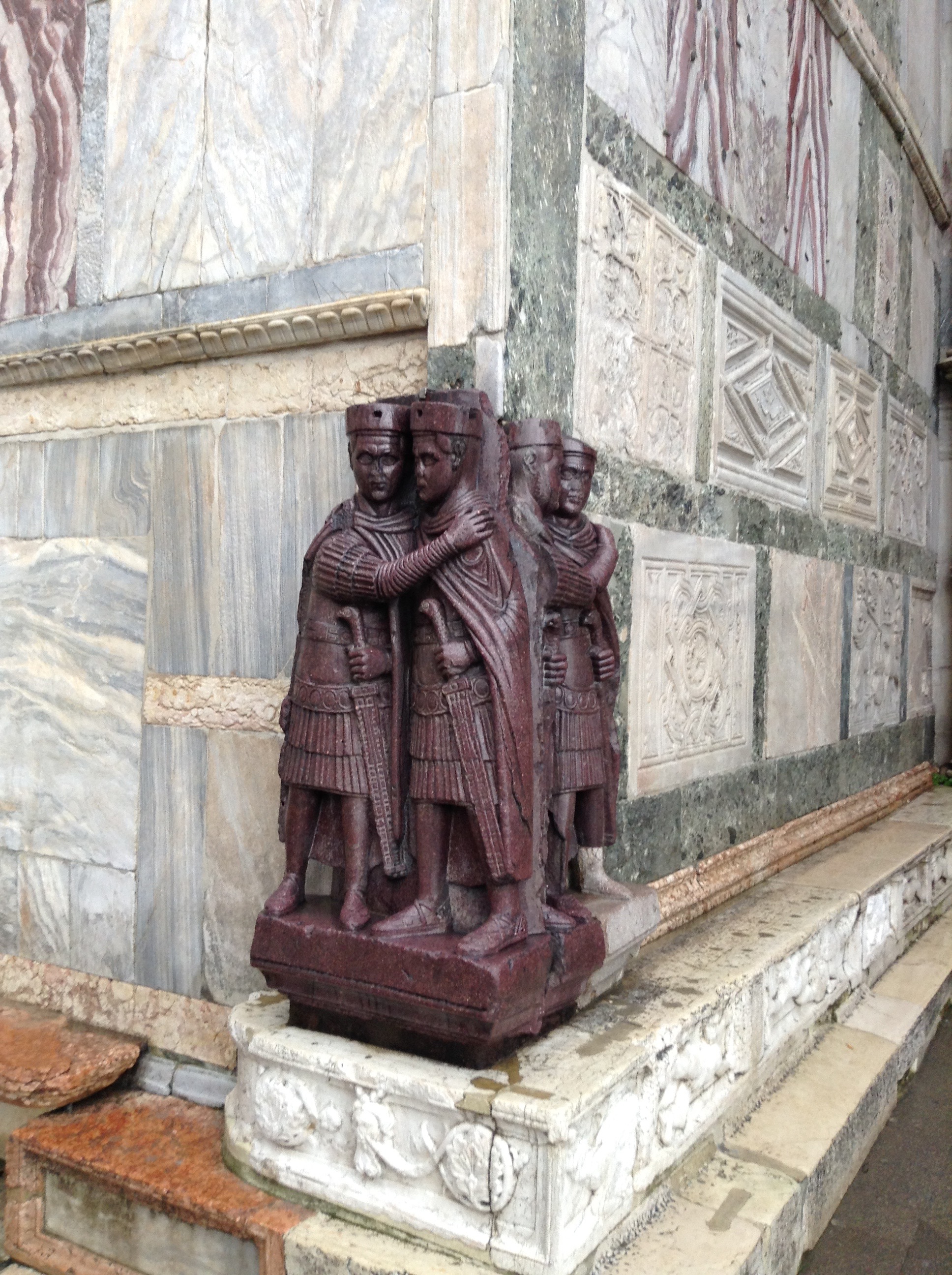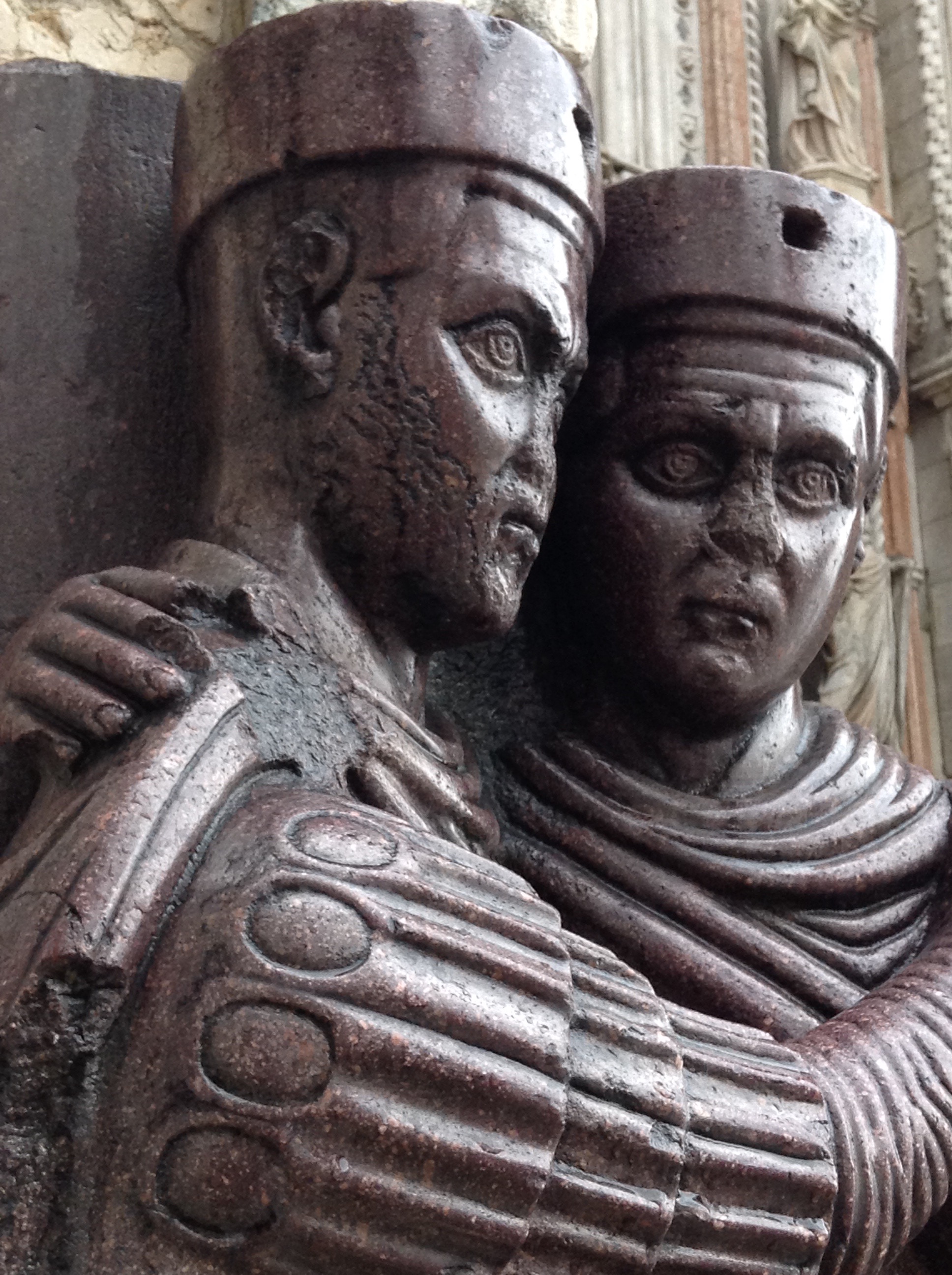 Chapter 2, p. 11: “We were forced to stand with our backs to the crowds and our hands behind our heads, staring at the four mysterious porphyry figures set into the corner of the treasury, while we waited for the sbirri to come.”
Chapter 2, p. 11: “We were forced to stand with our backs to the crowds and our hands behind our heads, staring at the four mysterious porphyry figures set into the corner of the treasury, while we waited for the sbirri to come.”
Every guidebook now indicates these figures as the Four Tetrarchs (yes, there’s a touch of tautology there…). However, in Alvise’s day the identification had not been made for certain. They were then popularly known (to quote from Alvise’s account) as “four Saracens who had attempted to rob the treasury and who had been transformed into stone for their pains”. Even then, though, it must have seemed odd that such a precious material as porphyry, usually reserved for emperors, had been used to portray robbers.
Although there is no definite documentation as to their provenance it was generally assumed that they were part of the booty from Constantinople, pinched during the Fourth Crusade. However, it was not until the 1960s that definite proof was found, when the missing foot of one of the statues was discovered in Istanbul close to the Bodrum Mosque. This foot is now in the Archaeology Museum in Istanbul. As yet Istanbul has pressed no claims to have the statues returned… 
Given that it was under Diocletian (who created the Tetrarchy) that the Roman Empire was first split into two halves, a move that led to the foundation of the city of Constantinople, there is a kind of suitable circularity in the way that this group of curiously conspiratorial-looking statues has ended up here, apparently acting as guards to the treasures stolen from the sack of that great city. At least I think there is something suitable in it. But then the relations between Venice and Constantinople are so complex that it is difficult to work out whether things are suitable, ironic, or just random and coincidental… That is (in part) what The Four Horsemen is about.


0 Comments